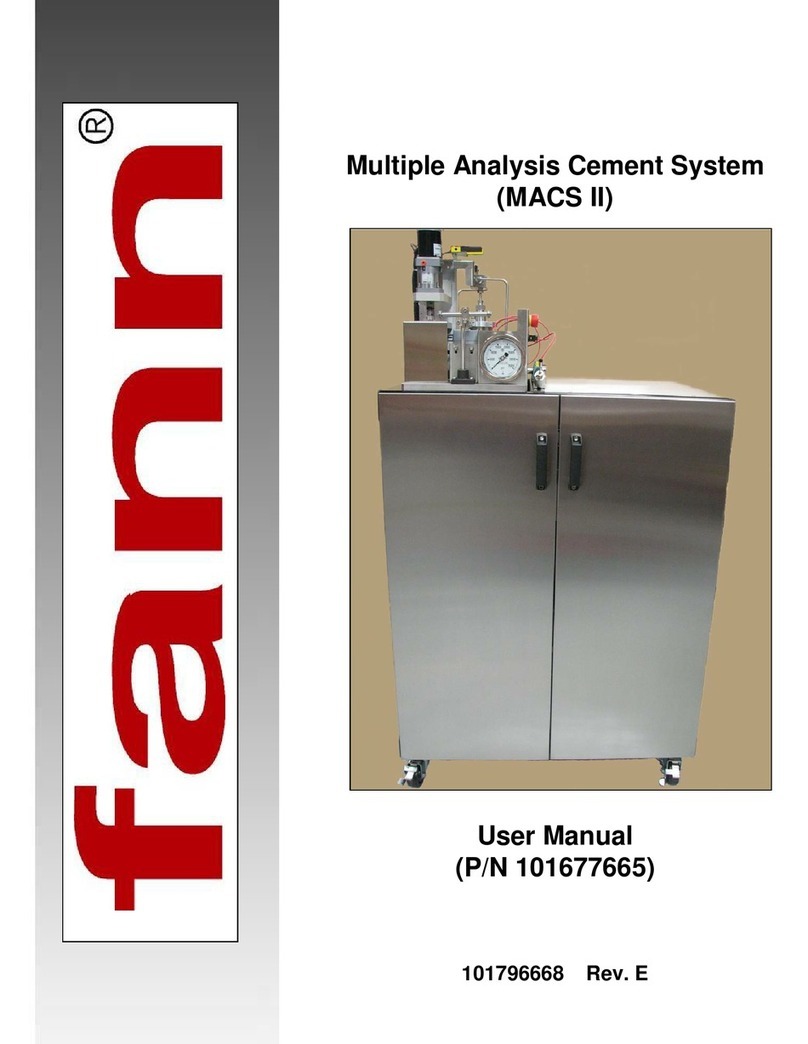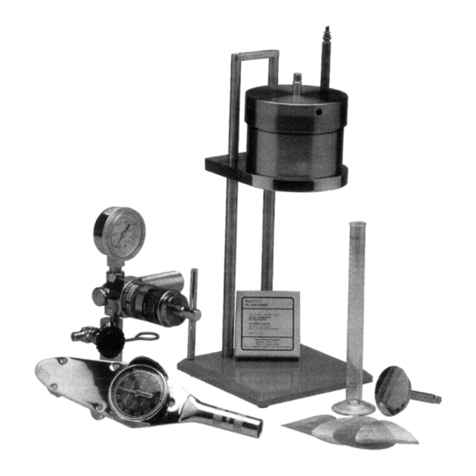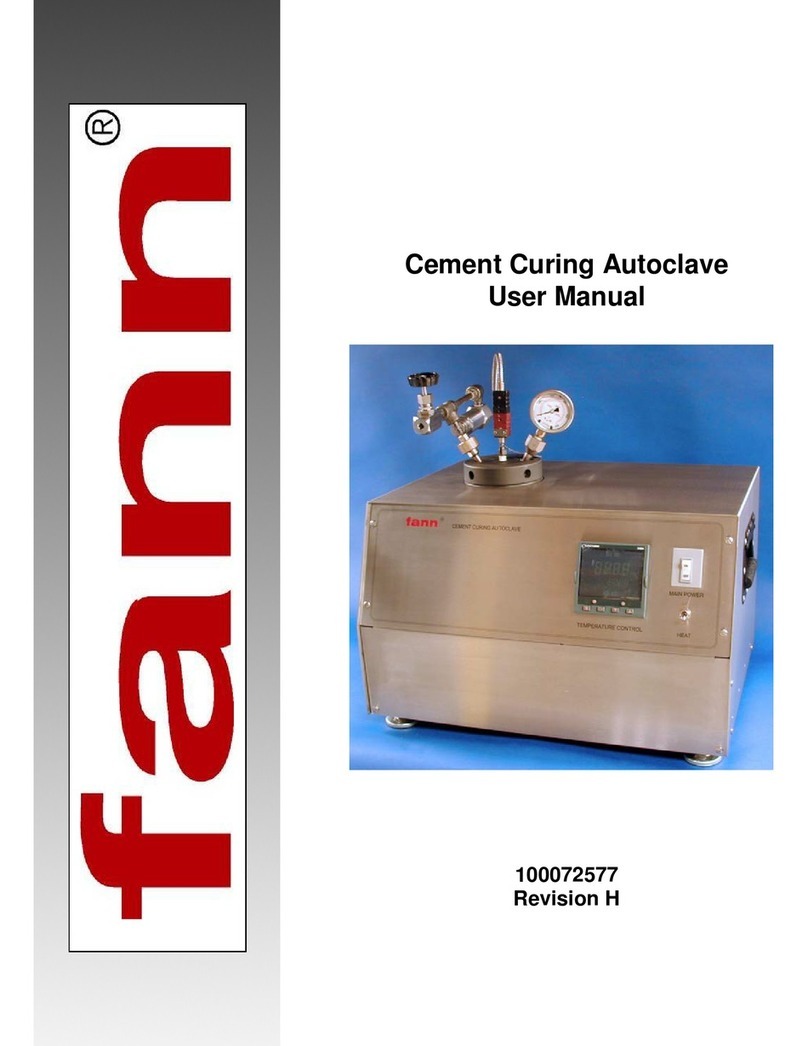Stirring Fluid Loss Manual
100031980 Revision F 3
Table of Contents
1Introduction.....................................................................................................7
1.1 Document Conventions...........................................................................8
2 Safety..............................................................................................................9
2.1 Safe Pressurization .................................................................................9
2.2 Safe Heating............................................................................................9
2.3 Safe Electrical Operation.......................................................................10
2.4 Safe Test Cell Maintenance ..................................................................10
3 Features and Specifications..........................................................................11
3.1 Stirring Fluid Loss Mechanical...............................................................13
3.2 Stirring Fluid Loss Controls ...................................................................15
4 Installation.....................................................................................................19
5 Operation......................................................................................................20
5.1 Pre-test the Instrument..........................................................................20
5.2 Load the Sample Chamber....................................................................22
5.3 Preheat the Sample Chamber...............................................................23
5.4 Start the Stirring Fluid Loss Test...........................................................25
5.5 End the Stirring Fluid Loss Test ............................................................26
5.6 Disassemble and Clean Equipment ......................................................28
5.7 Reassemble Equipment ........................................................................28
6 Test Analysis ................................................................................................30
6.1 References............................................................................................30
6.2 Results ..................................................................................................30
6.3 Variations ..............................................................................................30
6.4 Filtrate Volume......................................................................................30
6.5 Calculations...........................................................................................31
6.6 Reporting...............................................................................................31
7 Troubleshooting and Maintenance................................................................32
7.1 Preventive Maintenance........................................................................32
7.2 Packing Replacement ...........................................................................32
7.3 Temperature Controller and Heating Jacket..........................................33
7.4 Pressure and Motor Check....................................................................34
7.5 Filtrate Condenser.................................................................................35
7.6 Troubleshooting.....................................................................................36
8 Parts List.......................................................................................................38
































